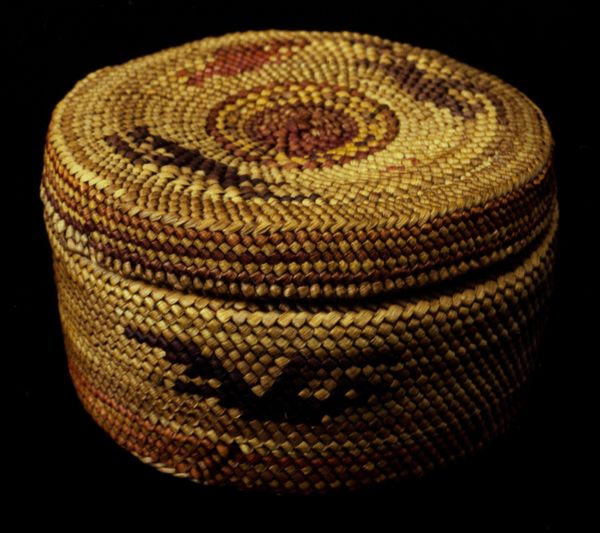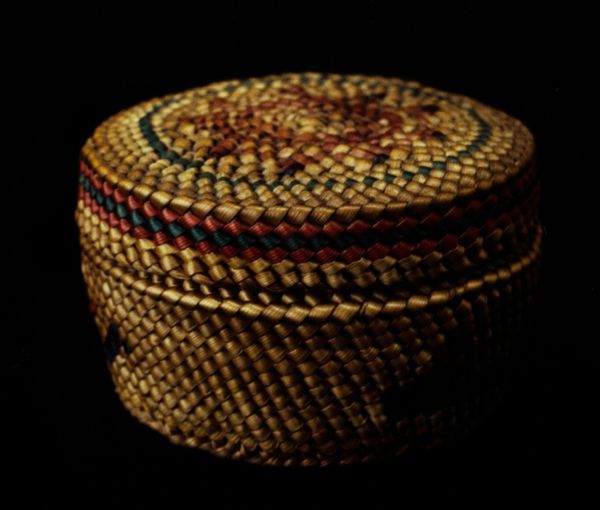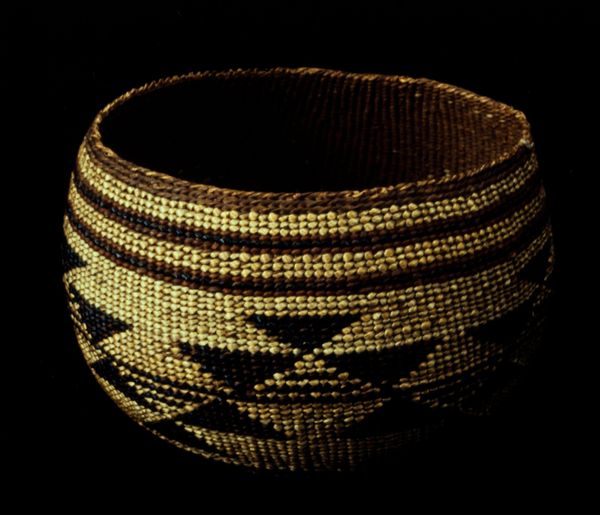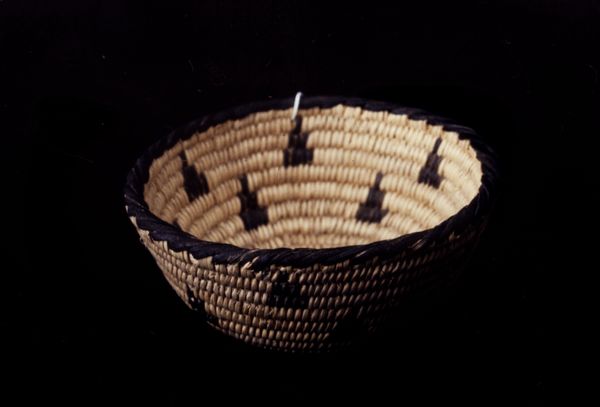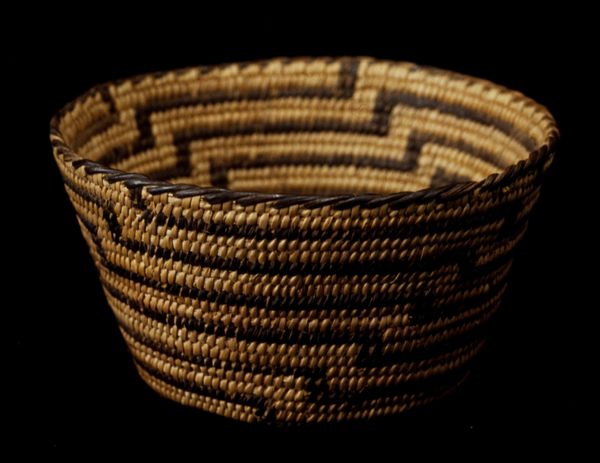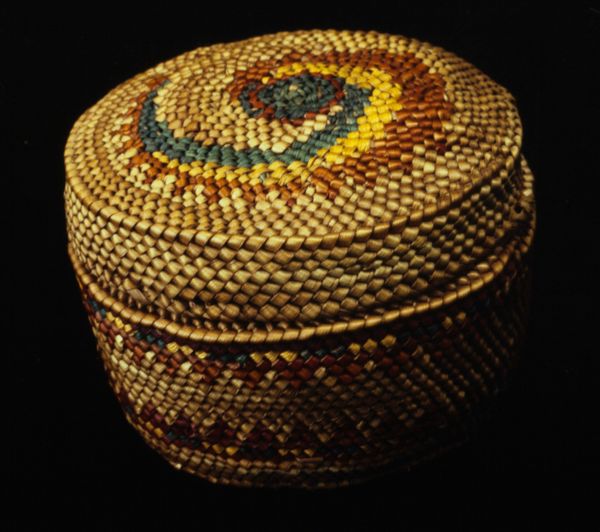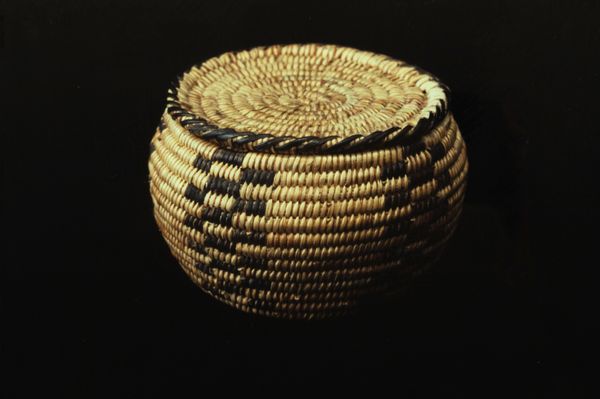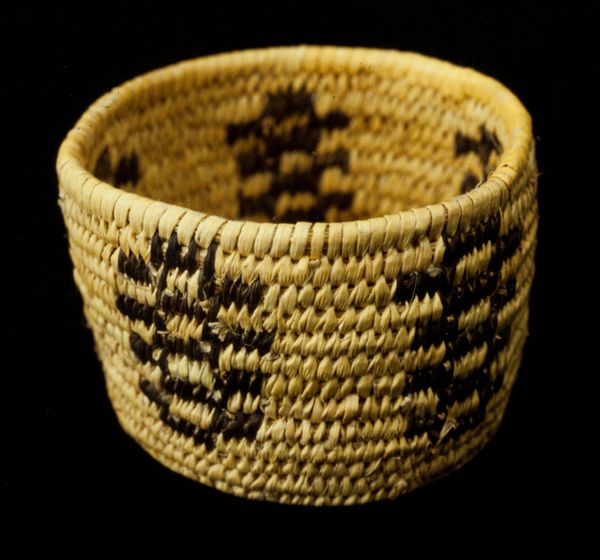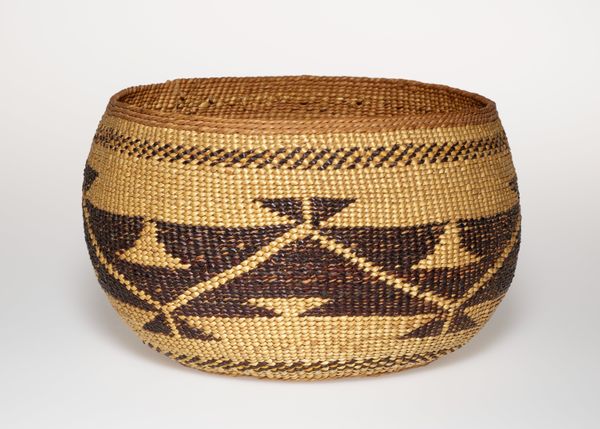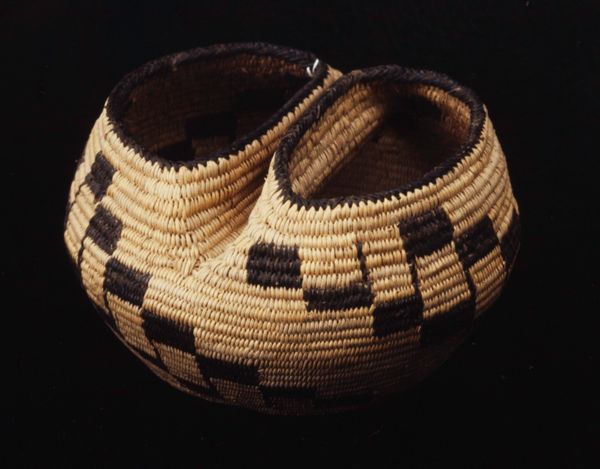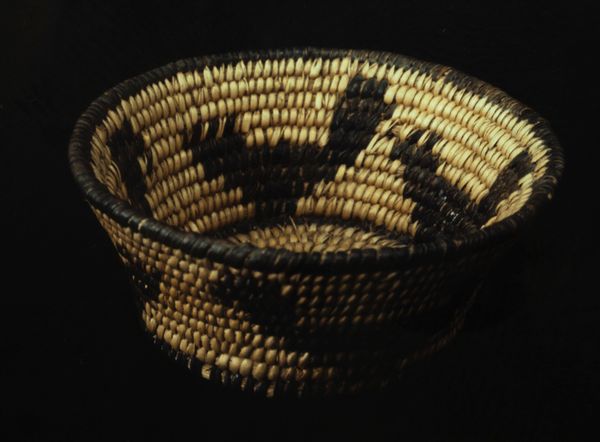
fibre-art, weaving
#
fibre-art
#
weaving
#
indigenous-americas
Dimensions: 2 x 3 1/2 x 3 1/2 in. (5.1 x 8.9 x 8.89 cm)
Copyright: Public Domain
Curator: This tightly woven "Basket", attributed to Qwiqwidicciat from the Makah community, likely dates to the 20th century. You can find it here at the Minneapolis Institute of Art. Editor: My immediate sense is how comforting it appears. The compact, round shape gives it a warm, familiar feeling, while the weave gives it a very tactile look. Curator: Right, the materiality speaks volumes. Fiber art, particularly weaving, plays an important role in many Indigenous cultures, serving not just practical but also symbolic functions. Consider how this basket reflects cultural transmission—techniques passed down through generations. Editor: Exactly! The question for me is how objects like this, once embedded in daily life and community, shift when placed within a museum context. Who decides its value? Curator: Museums, galleries, art markets—they all contribute to an object’s changing value. The cultural narrative shifts and the interpretation becomes influenced by broader power structures within the art world. It also allows for a more inclusive view of what constitutes "art," doesn't it? Editor: It’s still complex though, because accessibility becomes an issue, especially when we consider how marginalized communities often lack agency in defining or reclaiming their heritage within these institutions. I find myself thinking about how repatriation and collaborative curation can change these conversations. Curator: Absolutely. Repatriation sparks necessary dialogues. In looking at this specific example, consider how it bridges the domestic and the aesthetic. This wasn't simply "art for art's sake;" the piece reflects its utility and inherent role within the community that produced it. The labor, the skill... Editor: The organic themes, the feel, and connection. Considering identity, race, and cultural narratives, it is about acknowledging indigenous perspectives and their contributions to what we define as creative production. I can't help but see an unbroken chain connecting this piece to present-day Indigenous artists working across media. Curator: Right. Ultimately, this woven basket encapsulates cultural memory, utility, and the shifting values we, as observers, attribute to it through a constantly evolving art world and social understanding. Editor: Agreed. And hopefully, these reflections inspire further dialogue and self-assessment among institutions tasked with the presentation and preservation of cultural heritage.
Comments
No comments
Be the first to comment and join the conversation on the ultimate creative platform.
